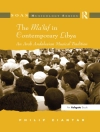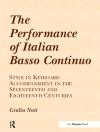The first detailed study of Schenker’s pathbreaking 1906 treatise, showing how it reflected 2500 years of thinking about harmony and presented a vigorous reaction to Austro-Germanic music theory ca. 1900.
What makes the compositions of Handel, Bach, Haydn, Mozart, Beethoven, Schubert, Schumann, Chopin, and Brahms stand out as great works of art? Heinrich Schenker (1868-1935) set out to answer this question in a series of treatises, beginning with a strikingly original work with the deceptive title
Harmonielehre (roughly: Treatise on Harmony, 1906).
Whereas other treatises of the period associated harmony with the abstract principles governing chords and chord progressions, Schenker’s treated it as the conceptual glue that allowed the individual elements of a work (melodies, motives, chords, counterpoint, etc.) to work together locally and globally. Yet this book, though renowned and much cited, has never been studied systematically and in close detail.
Heinrich Schenker’s Conception of Harmony approaches Schenker’s 1906 treatise as a synthesis of ancient ideas and very new ones. It translates, for the first time, two preparatory essays for
Harmonielehre and describes his later views of harmony and the ways in which they influenced and also were ignored by the 1954 edition and translation, entitled simply
Harmony. Though problematic,
Harmony was the first published translation of a major work by Schenker, inaugurating the study of his writings in postwar America and Britain, where they continue to be highly influential.
Robert W. Wason is Professor Emeritus of Music Theory and Affiliate Faculty in Jazz and Contemporary Media at the Eastman School of Music.
Matthew Brown is Professor of Music Theory at the Eastman School of Music.
Tabella dei contenuti
Introduction
PART I:
HARMONIELEHRE
The Eclectic Intellectual Methodology of Schenker’s Theory of Harmony (1906)
The Music-Theoretical Content of Schenker’s Theory of Harmony (1906), and the Status of Harmony in his Later Work
PART II:
HARMONIELEHRE: The Past
Schenker’s Theory of Harmony (1906) in Historical Perspective: The Theory of Harmony from the Ancient Greeks to the Early Nineteenth Century
Sources of Schenker’s Intellectual Methodology in 1906: The Conflict Between the Human and Natural Sciences in Schenker’s Education, Music Theory in the Later Nineteenth Century, and His Reaction to Both
PART III:
HARMONIELEHRE: The Future
A ‘New Edition’ for a New Audience and an ‘American Version’ for a New Country: Problems of Editing and Translating
Harmonielehre (1906)
The Twilight of the Masters: Schenker’s Reinterpretation of the Classical Concept of Harmony
Appendix A:’The Path to Likeness.’ Introduction and Translation of OC 83/2-43 by Robert Wason
Appendix B: ‘[Foundations of Tonal Systems.]’ Introduction and Translation of OC 31/360-417 by Robert Wason.
Circa l’autore
Matthew Brown is Professor of Music Theory at the Eastman School of Music.












